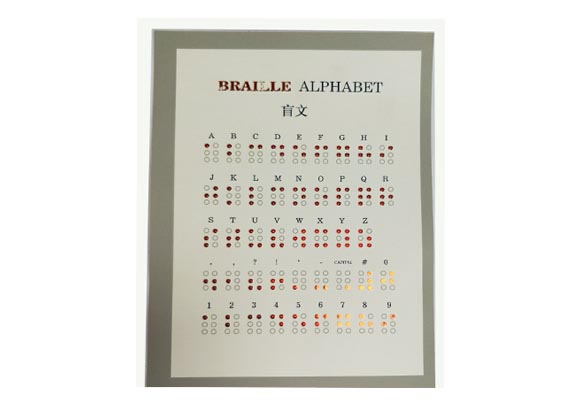Braille is a pinyin text designed for the blind. The letters are composed of different arrays of protruding ideas, and the blind can read by touching their fingers. Therefore, Braille printing is completely different from general text printing.
To date, three types of Braille have appeared in the world. First, the Frenchman Francesco Lucas carved letters on wooden blocks to teach the blind to read. Then someone used larger type letters, used pins to insert letters on the cushion, and embossed the letters with thick paper. Later, William Moon in Brighton, England created a Moon Type, which is a simple line of Braille. The third type of braille is to use simple raised dots to represent ordinary Latin letters. It is also from this point that the problem of blind reading has been fundamentally solved.
The current Braille is expressed in six dots by the French character Blair in 1825. The arrangement of the six dots in different positions respectively constitutes different dot characters. The blind characters can be read silently by touching the dot characters. Therefore, the dot character should be raised.
The raised dot size, dot pitch, kerning, and line spacing of Braille printing are fixed according to the physical and psychological characteristics of the blind's touch. The shape of the bump is generally hemispherical or parabolic. The diameter of the bottom of the bump is 1 ~ 1.6mm, the height is 0.2 ~ 0.5mm, and the pitch is 2.2 ~ 2.8mm. Too small bumps and too close distances will affect the touch response speed of blind people, and too large bumps will exceed the most sensitive area of blind fingertips. Braille printing methods include die imprint method, ink printing method, thermoplastic molding method, three-dimensional imitation method and foam printing method.



